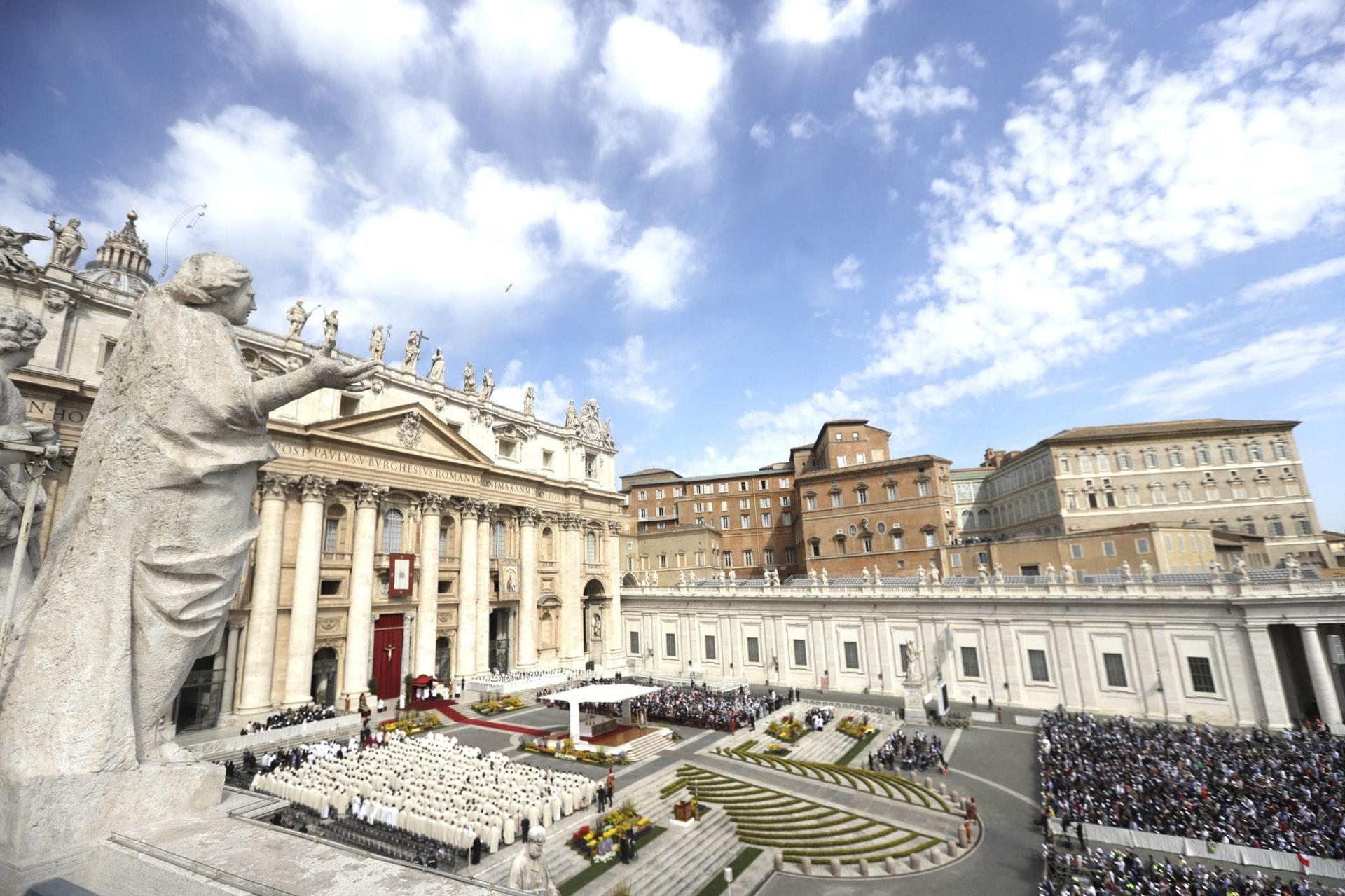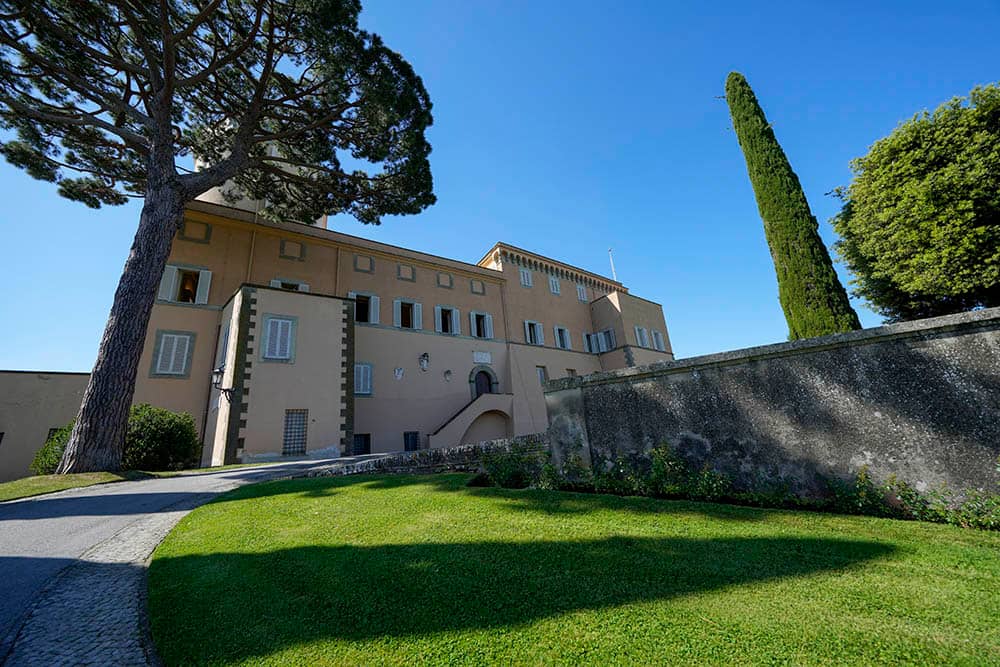By some miracle I’m actually home right now in Denver with my wife and pug, and this week business took me to our neighborhood FedEx store. I needed to get something quickly to a guy in the office that runs St. Peter’s Basilica, so I handed the clerk the package and said, “This is going to Vatican City State.”
He started entering the details into the computer, then looked up at me, puzzled, and asked, “Okay, what country is that in?”
My laughter didn’t help sort things out, but fortunately, when we entered the phone number for the Fabbrica di San Pietro, the system recognized “Vatican” as a legitimate entry in the “country” box. (Otherwise, I had told the clerk, just put down Italy … the Italians know what to do.)
This clerk, by the way, is no dolt. He’s helped me on projects before, and he’s genuinely curious about the world. (We spent 5 minutes unpacking why the Vatican’s a state, and he said he wants to know more). However, the fact he had no idea the Vatican really is sovereign is probably reflective of a broad swath of humanity.
It’s hard for a lot of people, especially Westerners accustomed to church/state separation, to understand why something perceived as a religious entity is also a state. For many who do know, the Vatican’s sovereignty often strikes them as a quaint anachronism. If they’re less charitably inclined, they see it as a malicious legal fiction insulating the Vatican from liability for sex abuse scandals, financial meltdowns, and other nefarious shenanigans.
In light of all that, perhaps a brief refresher course in the logic for Vatican sovereignty is in order. It’s rooted in considerations both historical and theological.
To begin with, popes were the temporal rulers of a broad swath of territory in central Italy called the Papal States for more or less a millennium, depending on how you count. The newly-created United States maintained consular relations with the Papal States from 1797 to 1870, and, later, diplomatic relations with the pope in his capacity as head of the Papal States from 1848 to 1868, though not at the ambassadorial level.
However, the current standing under international law of the Holy See – the technical term for the pope’s authority to govern the Church, as opposed to the 108-acre territory of the Vatican — is rooted in the 1929 Lateran Pacts with Italy, which, in turn, resolved the “Roman Question” after the fall of the Eternal City to Italian forces in 1870.
As is well known, Pope Pius IX declared himself a “prisoner of the Vatican” after 1870 and refused to recognize the new Italian state. As a stop-gap measure, Italy enacted the so-called Law of Guarantees in May 1871, granting the Vatican extra-territorial status, sort of like foreign embassies. Pius IX dismissed it and Leo XIII agreed, insisting that in order to maintain the independence of the papacy it was essential to have full sovereignty over some patch of territory, however small.
Otherwise, Pope Leo said, the papacy’s independence will always be “only apparent and transitory, for it is subject to the will of others. Those who conferred it yesterday can cancel it tomorrow.”
The Lateran Pacts essentially were a deal in which the Vatican recognized Italy while Italy recognized the full sovereignty of the Vatican, and paid compensation for the loss of the Papal States.
Since then, the Holy See has gone on to cultivate diplomatic relations with 183 nations around the world. Given that there are only 193 countries recognized by the United Nations, the Vatican’s sovereign standing is hardly a legal fiction but a solid global consensus.
Among other signs of that standing, article 16 of the 1961 Vienna Convention on Diplomatic Relations codified the informal practice that papal ambassadors are recognized as the deans of the diplomatic corps in many countries to which they are accredited.
By the way, there are compelling motives for so many countries to pursue diplomatic ties with the Holy See.
For one thing, it’s not part of any power bloc or trade system that creates rivalries or competing interests, so its relations are not limited to countries “on its side.” Further, papal ambassadors in every country are privy to an intelligence network any spy agency would envy: The local Church, meaning local clergy, religious and bishops, who know the language, the people and the situation from the inside out. Papal nuncios who know how to take advantage of those resources are often among the best-informed diplomats on earth.
In terms of Catholic theology and ecclesiology, the Vatican’s anxiety over sovereignty is likewise ultimately rooted in preserving the papacy’s independence, in this case in order to preserve the deposit of faith over time.
Granted, there’s a good case for rethinking the limits of papal power, and Pope Francis himself repeatedly has advocated a “healthy decentralization.” Yet pretty much everyone would recognize that in some form, the papacy is an essential center of unity in a far-flung global family of faith with almost 1.3 billion members in every nook and cranny of the planet.
Consider the centrifugal forces the Church confronts, and this is just a small sampling:
- Theological movements in several parts of the world advocating “inculturation,” which has always been part of the Church’s life, but which taken too far can produce a weak Catholicism in which the only thing really uniting Catholics is the name. The content and experience of the faith could fragment to the point of becoming unrecognizable.
- Hostile governments in places such as China, North Korea, Vietnam, and parts of the Arab world who’d like nothing better than to decouple the local Catholic community from the rest of the Church, in an effort to minimize the capacity of those communities to threaten the regime. (For many, the experience of totalitarian states in the 20th century shows that’s not an idle threat.)
- Secular cultures, especially in the West, that don’t approve of some aspects of the Church’s moral teaching, which subtly and not-so-subtly encourage a sort of “cafeteria Catholicism.”
Facing all that, if the Church didn’t already have some concept of papal sovereignty, it would probably have to invent it.
The bottom line is that the Holy See’s sovereign status is likely here to stay. What can’t be guaranteed, though, is whether that will be enough to convince shipping companies to make sure everybody knows it.
















